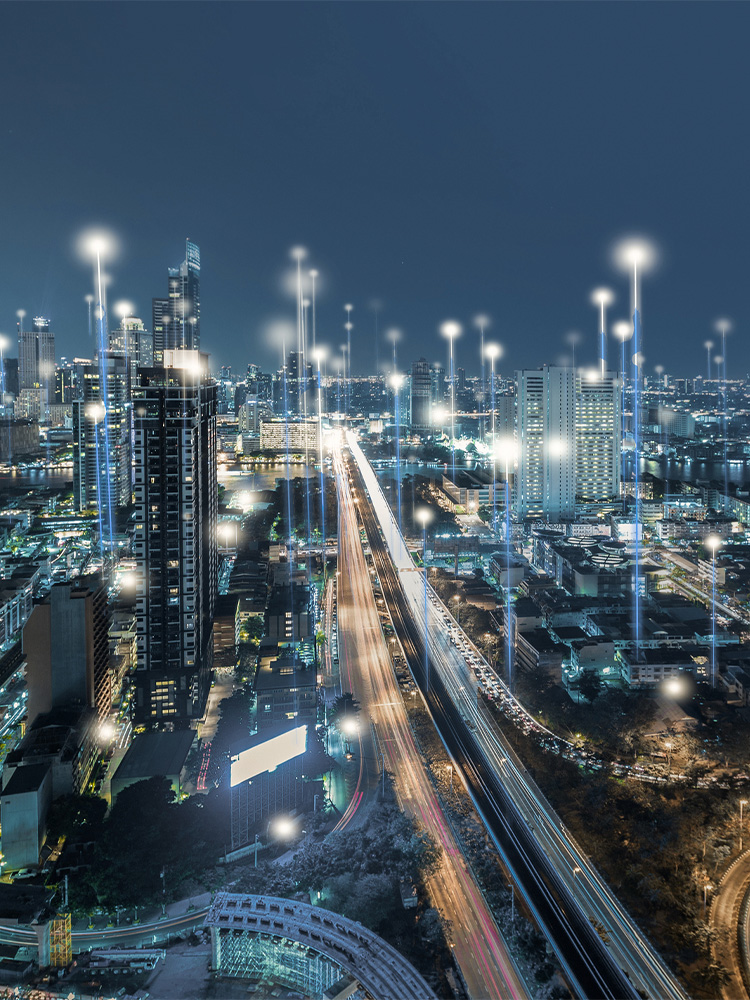What is a Smart City and how it works
Thanks to technological innovation, an “intelligent” city improves the quality of life by promoting sustainability, security and social inclusion for the benefit of citizens and businesses
For years there has been talk about the Smart City, or “intelligent city”, however the term is often used in an inexact and approximate way to describe the evolution of urban areas considering only the technological aspects, if not with a futuristic and science-fiction meaning.
A Smart City, in reality, is an “intelligent city” as it is socially inclusive and on a human scale, promotes sustainable development while offering innovative solutions related to mobility, infrastructure and management of energy resources (with the aim of becoming self-sufficient), thereby improving the quality of life of its citizens.
The transition towards Smart Cities, therefore, is necessary to respond to contemporary problems such as the climate crisis and population growth, also because the United Nations predicts that, by 2050, 70% of the world’s population will live in increasingly large and populous urban centers.


Definition and true meaning of Smart City
The concept of Smart City has evolved hand in hand with technological progress and digital transformation, and in this regard the European Union has provided a more precise definition: “A smart city is a place where traditional networks and services are more efficient thanks to the use of digital solutions for the benefit of its inhabitants and businesses”, with “a more interactive and reactive city administration, safer public spaces and solutions capable of responding to the needs of an aging population”.
Smart City for the European Union therefore means:
- Smart urban transport networks
- Plants that improve water supply and waste disposal;
- More efficient ways for smart buildings heating and lighting through electrification and the use of renewable energies;
- More interactive and more reactive cities administration;
- Safer public spaces.
Which are the main characteristics of a Smart City
An “intelligent city” is not exclusively linked to the adoption of new technologies, with smart city’s main characteristics concerning six different aspects:
- Smart Governance: intelligent administration can be achieved through greater connection and interactions between citizens, businesses and other actors of civil society, and focuses on human capital, environmental resources, community relationships and community assets;
- Smart Economy: urban economy and commerce that aim to increase productivity and employment in the city, making it more attractive for startups, investors and companies with sustainable economic growth that increases its competitiveness.
- Smart Environment: sustainable development that can be pursued by reducing the production of waste and the environmental impact, while simultaneously increasing energy efficiency.
- Smart Mobility: adoption of intelligent mobility solutions (from e-mobility to solutions such as integrated or sharing mobility), improvement of the quality of public transport and more efficient management, as well as investments in new infrastructures to reduce costs and environmental impact of urban mobility.
- Smart Living: greater social and digital inclusion of citizens, guaranteeing their well-being by paying attention to aspects such as assistance for the elderly, health, safety, culture and better housing conditions.
- Smart People: from intelligent forms of education aimed at increasing employment up to “permanent” training courses for all age groups, passing through the involvement and active participation of citizens in decision-making processes


How a Smart City works and what advantages it offers
A Smart City works thanks to the use of sensors and IoT (Internet of Things) devices, i.e. objects used daily such as lighting systems (public and private) and meters connected to the Internet by exploiting home connectivity, 5G and public Wi-Fi for collection and data analysis.
In a Smart City, the huge amount of data collected is analyzed to improve infrastructure and simplify access to services - including public ones - with a data-driven approach, which simultaneously makes it possible to increase public safety, improve traffic management and reduce pollution. Indeed, Smart Cities use different strategies to reduce their ecological footprint and facilitate the achievement of the United Nations goals related to sustainable development.
Therefore, a Smart City offers various advantages to its inhabitants such as better air quality, energy saving and reduced carbon footprint. A set of factors that make Smart Cities sustainable, resilient and more “circular”.
An “intelligent city” is also more attractive and competitive than “traditional” ones, representing a driving force for the growth of a country and, in addition to aiming for energy self-sufficiency, it exploits new technologies in the ICT (information & communication technologies) field to improve the quality of life of citizens. Furthermore, a Smart City is able to respond to the needs of its inhabitants as well as those of future generations by rapidly adopting innovative solutions.
Intesa Sanpaolo Innovation Center and Smart Cities: the program Torino Cities of Future Techstars Accelerator
Solutions developed mainly thanks to open innovation, with Intesa Sanpaolo Innovation Center contributing to the development of Smart Cities being a corporate partner of the international acceleration program “Turin Cities of the Future Techstars Accelerator”.
The program, promoted by the US company Techstars – one of the world’s leading companies in the sector - is dedicated to startups active in the realization of services and products for Smart Cities, with the Demo Day on 11 May 2023 held at the OGR in Turin to conclude the fourth edition after a 2022 that recorded a marked growth of interest and investments in projects for the “smart transformation” of Italian urban centers.
